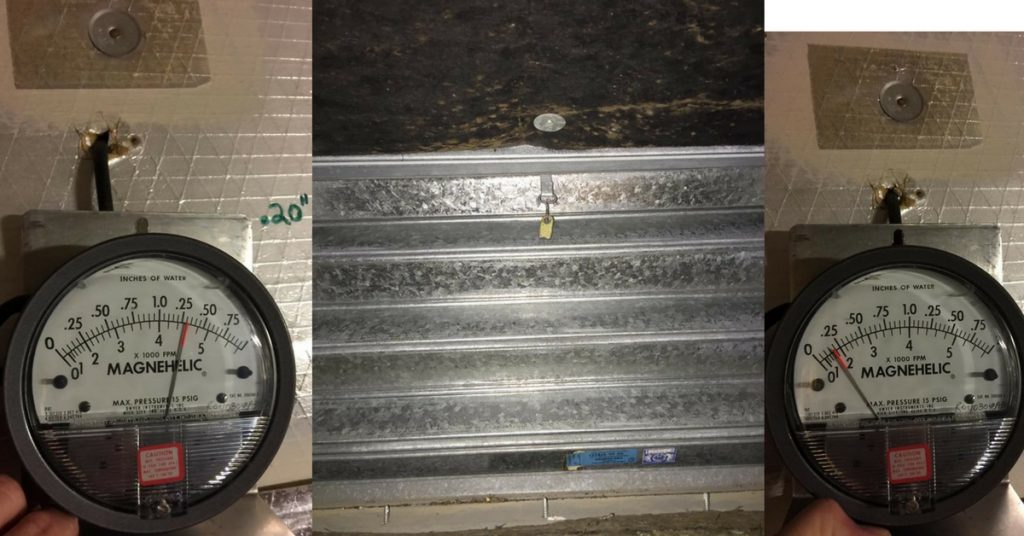Get Tech Tips
Subscribe to free tech tips.
Fire Damper Tips
Tech Brandon Livingston posted about fire dampers and took some photos shown here. He gave me permission to share this here, and his original post inspired this tip. Thanks, Brandon.
The picture on the left shows the situation before the damper was opened. The right image show what happened after it was opened and a new link was installed.

A fire damper is an important part of commercial fire safety, preventing the spread of flame and smoke. However, it can lead to a loss of airflow in a building when they close, leading to a service call.
A fire damper is designed to remain open during normal conditions and slam shut to prevent the spread of flame, heat, and smoke during a fire. When the link in the fire damper reaches the rated temperature, the link will break, and the damper will slam shut. That can sometimes happen as the links get older and become brittle or due to vibration over time. Fusible link temperature set points are usually 165°F, 212°F, or 286°F, with 165°F being the most common.
Generally, you will find fire dampers where ducts pass through partition walls or floors in commercial applications.
Fire dampers commonly come in 1.5 and 3-hour fire ratings. The hour ratings for fire dampers must be 75% of the hour rating for the wall, floor, or partition. That is why a fire damper rated for 1.5 hours can be used in a fire barrier rated for up to 2 hours, and a fire damper rated for 3 hours can be used in a fire barrier rated up to 4 hours.
When installing any new system, it is a good practice to measure and mark the normal static pressure on the supply and return ductwork once the air balance has been completed. On commercial buildings that you maintain or service regularly, it is a good idea to do it once you take over the building to make future service easier. This way, whenever a damper shuts, you will know very quickly by comparing the current static to the baseline you have established. You can easily check duct static pressure using a quality manometer or Magnehelic gauge. Keep in mind that you will need a pitot tube adapter on high air velocity systems to get an accurate reading.
If a fire damper is shut, it can be very difficult to get open by hand. While it is possible, a tool like the FiDO Fire Damper Opener will come in very handy.
—Bryan











Comments
To leave a comment, you need to log in.
Log In